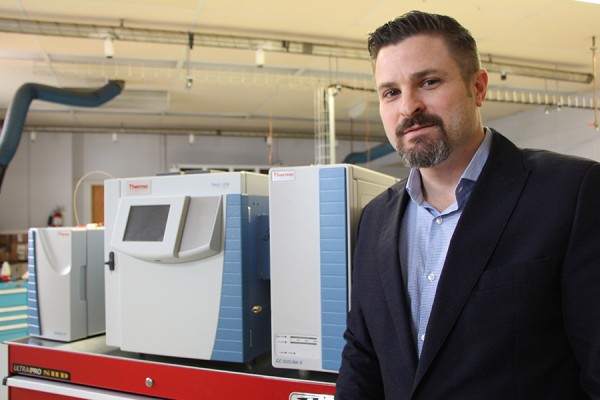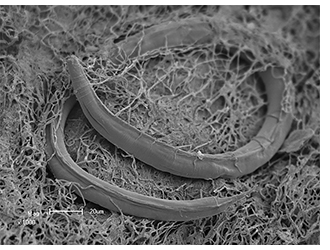 UWindsor professor Scott Mundle co-authored a research paper that suggests looking deep underground for life on other planets.
UWindsor professor Scott Mundle co-authored a research paper that suggests looking deep underground for life on other planets.
Scientists hoping to find life on Mars should look down — way, way down.
A paper co-authored by UWindsor professor Scott Mundle published this month in Scientific Reports, an open-access subsidiary of the journal Nature, suggests seismic activity allows organisms to migrate deep into the Earth’s subsurface through rock fractures. Since seismic activity occurs on other planets and moons, too, life elsewhere in our solar system could be contained in ecosystems deep in the subsurface, the research suggests.
“If life is going to be found on Mars, it will be found in the subsurface,” said Dr. Mundle. Regions with historical seismic activity and surface water are important considerations when selecting landing sites for planetary exploration, he said.
The new paper, New Ecosystems in the Deep Subsurface Follow the Flow of Water Driven by Geological Activity, is borne of research by Belgian biologist Gaetan Borgonie. Borgonie went into gold, platinum, and diamond mines in South Africa and collected samples of water dripping from the walls nearly four kilometres underground.
 In 2011, Borgonie found nematodes — microscopic worms like the one pictured at left — in the samples. Further research into this ground-breaking discovery showed the water dripping into the mines came from pockets 5,000 years old. Additionally, the samples showed that the nematodes were not alone. Algae, bacteria, insects, and crustaceans were also found, surviving by grazing on biofilm made up of dead cellular matter and other organisms.
In 2011, Borgonie found nematodes — microscopic worms like the one pictured at left — in the samples. Further research into this ground-breaking discovery showed the water dripping into the mines came from pockets 5,000 years old. Additionally, the samples showed that the nematodes were not alone. Algae, bacteria, insects, and crustaceans were also found, surviving by grazing on biofilm made up of dead cellular matter and other organisms.
“Finding life in the deep subsurface was a big discovery, but for us it was just as important to understand how it got there and how it survives” said Mundle.
“The only way we could access a definitive answer to this question was to choose a location with a known deep ecosystem and open hydrological system, set up a field site laboratory in the deep subsurface mine, and manually simulate seismic activity.”
The idea that seismic activity is a major driving force for life has not been previously demonstrated and is not obvious, as many locations that have seismic activity do not sustain life in the deep subsurface, Mundle said. The research addresses a number of biological survival factors working with seismic activity to create the ideal conditions for life in these extreme environments.
“It is the complementary nature of the physical and biological processes that provide a means for survival,” Mundle said.
Borgonie and Mundle collaborated with 14 other researchers from around the globe on the new paper, bringing together the worlds of biology and chemistry.
“As seismic activity is a non-selective force, we recovered specimen of algae and insecta that defy any obvious other explanation at a depth of -3.4 km,” the researchers wrote.
“As seismic activity is also present on other planets and moons in our solar system the mechanism elucidated here may be relevant for future search and selection of landing sites in planetary exploration.”
─Sarah Sacheli
